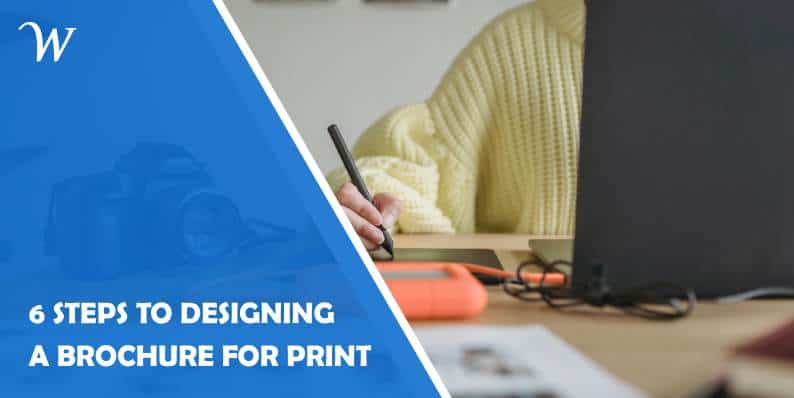Brochures are powerful marketing tools that allow businesses to showcase their products, services, and brand in a visually appealing and informative manner. Whether you’re promoting a new product line, announcing an event, or simply introducing your company, a well-designed brochure can leave a lasting impression on your target audience. To ensure your brochure looks professional and effectively communicates your message, follow these six essential steps to designing a brochure for print.
Step 1: Define Your Purpose and Audience
Before diving into the design process, it’s crucial to clearly define the purpose of your brochure and identify your target audience. Understanding your objectives will help you structure the content and layout accordingly. Ask yourself questions like:
- What is the main message you want to convey?
- What action do you want your audience to take after reading the brochure?
- Who is your target audience? What are their interests and preferences?
Defining your purpose and audience will guide the entire design process and ensure your brochure resonates with its intended readers.
Step 2: Plan Your Content and Organize Information
Now that you have a clear purpose and audience in mind, plan the content you want to include in the brochure. Keep in mind that brochures should be concise and visually appealing. Avoid overwhelming your readers with excessive text and cluttered layouts.
Organize the information logically, using headings, subheadings, and bullet points to make it easy for readers to skim through and find relevant information. Consider using eye-catching graphics and images that align with your brand and support the content.
Step 3: Choose an Appropriate Format and Size
Selecting the right format and size for your brochure is essential for its overall impact. Common brochure formats include bi-fold, tri-fold, gatefold, and z-fold. Each format offers a different way to present your content, so choose the one that best suits your purpose and fits the content comfortably.
Similarly, consider the size of the brochure. Standard sizes like 8.5″ x 11″ or 11″ x 17″ are widely used, but you can also opt for custom sizes to make your brochure stand out. Remember that the chosen size should be practical for distribution and fit well with your design layout.

Step 4: Create a Captivating Design
A visually appealing design is the heart of any successful brochure. Start by choosing a color scheme that complements your brand and evokes the desired emotions in your audience. Consistency with your brand’s colors and fonts will reinforce brand recognition.
When designing, keep the layout clean and organized. Use gridlines to align elements properly, ensuring a professional and polished look. Include high-quality images and graphics that enhance the content and captivate the readers. Make sure to leave ample white space to avoid a cluttered appearance and improve readability.
Step 5: Incorporate Call-to-Action (CTA) Elements
A well-designed brochure not only informs but also prompts the reader to take action. Whether it’s visiting your website, making a purchase, or contacting your business, including clear and compelling call-to-action (CTA) elements is essential.
Place CTAs strategically throughout the brochure, such as at the end of each section or on the back panel. Use action-oriented language to motivate readers to act immediately. For example, phrases like “Call Now,” “Limited Time Offer,” or “Visit Our Website” can be effective in driving responses.
Step 6: Proofread and Print with a Reputable Vendor
Before sending your brochure to print, proofread it meticulously to catch any errors in spelling, grammar, or layout. Typos and mistakes can undermine the professionalism of your brochure and diminish its effectiveness. Have multiple people review the content to ensure thorough proofreading.
Once you’re confident that the design and content are flawless, choose a reputable printing vendor to bring your brochure to life. Consider factors like printing quality, paper options, and turnaround time when selecting a vendor. Request a printed proof before printing the entire batch to ensure the colors and layout appear as expected.
Designing a brochure for print requires careful planning, creativity, and attention to detail. By following these six steps, you can create a brochure that effectively communicates your message, captivates your target audience, and reflects your brand in a positive light. Remember to define your purpose and audience, organize the content, choose an appropriate format and size, create a captivating design, incorporate clear CTAs, and thoroughly proofread before printing. A well-executed brochure will undoubtedly leave a lasting impression on your audience and contribute to the success of your marketing efforts.
Latest posts by Antonia Zivcic (see all)
Where Should We Send
Your WordPress Deals & Discounts?
Subscribe to Our Newsletter and Get Your First Deal Delivered Instant to Your Email Inbox.
Thank you for subscribing.
Something went wrong.
Keep reading the article at WP Newsify. The article was originally written by Antonia Zivcic on 2023-07-19 14:39:15.
The article was hand-picked and curated for you by the Editorial Team of WP Archives.

